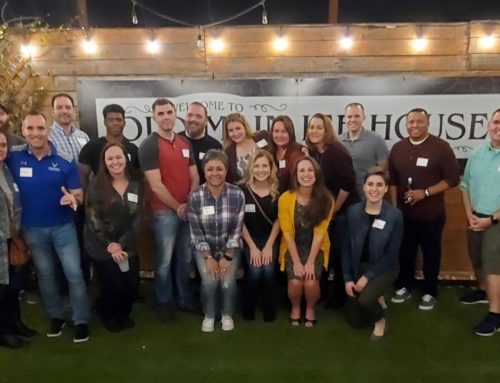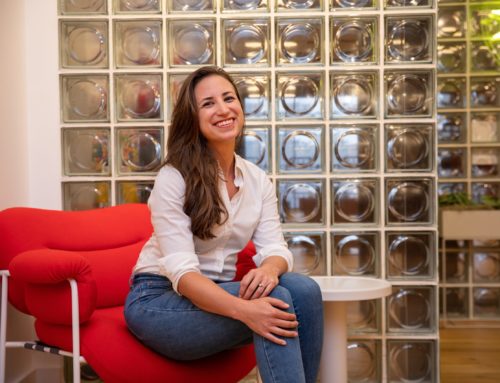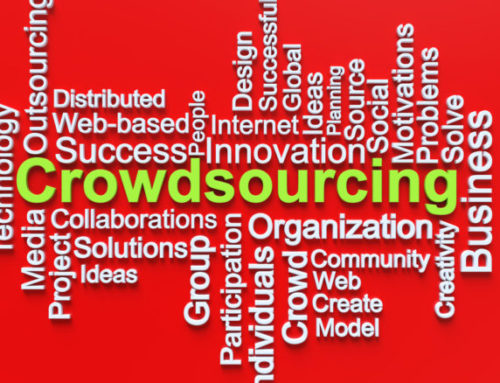What I Mean When I Say “Dinosaurs Need to Learn to Dance with Unicorns”
This new, evocative aphorism actually came from Mei Jiang who was an entertaining and engaging speaker from HP who presented at the inspiring and insightful Open Innovation Summit last week. She referred to a problem that was repeatedly diagnosed by the speakers: the need for our huge, industry-leading companies (the Dinosaurs) to change, improve and offer solutions with the agility of startups (our Unicorns)…. In the space of Open Innovation, companies from P&G to Clorox to Jetblue to Microsoft to Uber are trying to find answers to this question. Some companies are acquisitive, others partner with or fund start-ups, some build corporate accelerators and even if we don’t have a tidy algorithm to address this pressing problem yet, I did walk away from the event with some best practices that will guide dinosaurs and unicorns in their choreography:
Find a Catalyst
Sometimes you need a reason to make innovation a burning imperative at a large, continuously growing organization. Sometimes that reason can be an initial failure. Gaby Howe of Station Houston said that this was the opportunity when Houston wasn’t even listed as a finalist for a potential Amazon HQ2 location. But all of the major players who had believed in the bid found themselves around the table: leaders in politics, in business, startup change agents were suddenly all ready to ask themselves why they hadn’t met their goal and what they were going to do something different next time. So many presenters spoke to this problem – that of needing to create urgency in an ecosystem that yearns for predictability. Mark Brodeur and Goran Kukic of Nestle said that one of their three major purviews for their open innovation department was to inspire and educate leadership to act on innovation. That message comes in a number of formats: Jeremy Balkin of HSBC reminds his company of the reasons to be inspired by the possibilities of new technology and Navin Kunde of Clorox stated that he felt the need to “bring some anxiety home.” I believe the recipe for creating an innovation catalyst requires both messages.
Differentiation Does Not Lie in the Technology
In some ways, the subject matter was what you would expect. I think we hit on all the major tech and innovation trends: edge computing, 5G, globalization, AI, VR, quantum computing, blockchain, wearable tech, experience economy, voice, the list goes on. But it was Mei Jiang once again who offered this insight – that the impact of technology on competitiveness is diminishing – instead our competitive differentiation will come from leaders who can move swiftly, refine or revisit business models, invest in new channels, partner in an interesting way, because soon everyone will have access to the technology that we think will keep our company at the leading edge.
Adaptability is the Essential Skill for the Innovation Workforce
On stage and off – attendees were talking about building teams of the future. These innovation departments are growing and they need to be peopled by resourceful, optimistic people. But the skills we need for our workplace are different – with change as a constant employees need to be adaptable, communicate well, and valued for what they can learn, not necessarily what program language they know. (Ultra, in particular, had some exciting ideas about designing a universal workplace where every employee comes with their own “user manual”). But the job description for innovation certainly isn’t nailed down yet. One thing that I will say I noticed however, was that most of the luminary speakers had experience both in startups with their rapid experimentation and in big brands with their complex and powerful architecture.
Pairing Internal Employees with Startup is a Huge Opportunity
I was impressed to hear Cisco’s story yet again. Cisco nurtures global relationships with start-ups to find their innovation edge, but also gathers and incubates promising employee ideas in their intrapreneurship program. They also oftentimes bring their employees along to work with the startups on those identified projects so that their entire team (internal and external) levels up together.
One other thing about the Cisco story that caught my eye was Alex Goryachev’s breathtaking humility about innovation. He talked nurturing all types of innovation – even things like making the lunch line shorter in the cafeteria if that’s what employees thought was a pressing issue. Other innovation departments might find themselves above a lower-impact problem like this, but Goryachev’s response was dead on: “If you can’t shorten the line in the cafeteria, you probably can’t deliver an innovative product.”
We Constantly Need to Demonstrate Our Capacity for Change
Jim Hemerling gave a fantastic summary of what it takes to innovate: a combination of the head (vision and strategy), the heart (our people), and the hands (the ability to implement and deliver) through the lens of Microsoft. At one point he talked about CEO Satya Nadella’s revision of the Microsoft vision of “Cloud first, mobile first” into “intelligent cloud, intelligent edge” which was a response to emerging trends in AI. Jim brought up this story to demonstrate Nadella’s ability to articulate Microsoft in a new context, but I think the other nice thing about this story is that changing the vision demonstrated Nadella’s ability to adapt, shift, and iterate. For a long time, we have valued consistency and predictability – we need leaders who will review the constantly retreating horizon and shift course with confidence. If we see a leader change their mind, we know that we also are allowed to change… and should.
If we can take all these lessons to heart, I think our industry leaders will certainly be able to partner with startups in a mutually beneficial relationship, and startups will be eager to work with our enterprise corporations. And that willingness to collaborate is what will underlie our dinosaurs and our unicorns dancing together….
AND JUST FOR FUN:
Working in innovation at IdeaScale, sometimes I feel like I’m pretty hip to the emerging trends shaping our lives. I do think of a near-future time with autonomous vehicles, consumer 3D printing, food as platform, and more. But somehow, I always have my mind blown by a few other provocative concepts at events like these. It’s a pleasure to constantly find a new concept and realize “what the hell do I know?” all over again.
Here are just a few that came up during the Open Innovation Summit:
- VR and gaming are still tethered experiences, but what would change if they no longer had that requirement?
- We know about Search Engine Optimization, but are you thinking about Voice Engine Optimization?
- If something takes less than 10 ms, then humans experience it as instantaneous. 5G will make us move faster than that.
- It takes about 45 minutes to “build a basket” (do your grocery shopping) – Albertson’s aims to get that experience to less than five minutes… Personally, I can’t wait.
Thanks Drew Ianni and BCG for a stellar event, I’m sure the upcoming ones will be just as edifying!




